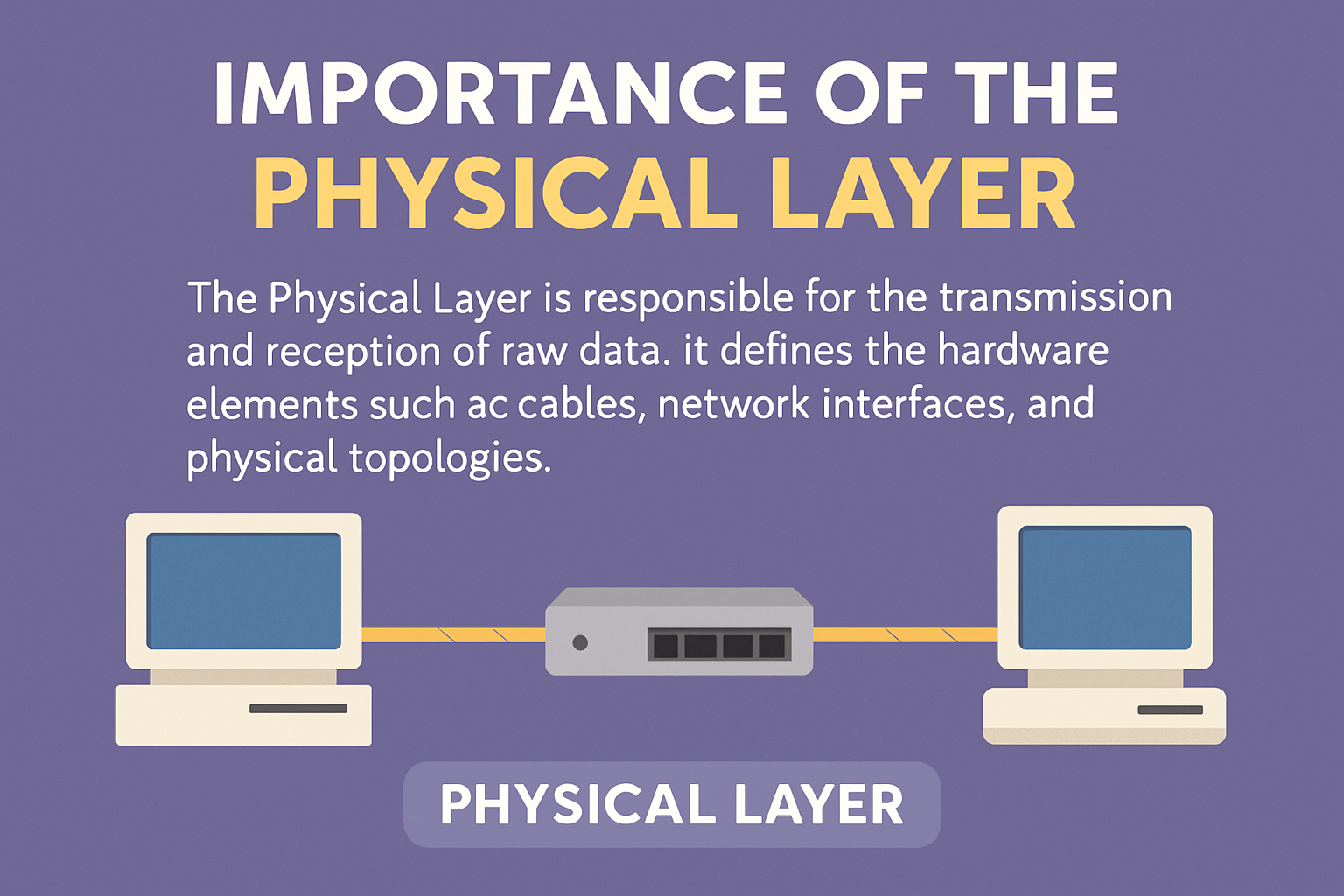The physical layer serves as the foundational component of any communication network, responsible for the transmission and reception of raw data signals over physical media. Its importance can be summarized through several key functions and contributions:
Transmission of Data Signals
The physical layer facilitates the conversion of digital data into electrical, optical, or radio signals suitable for transmission across various media such as cables, fiber optics, or wireless channels. This conversion is essential for enabling communication between devices.
Establishment and Maintenance of Physical Connections
It ensures that physical connections between devices are properly established, maintained, and terminated. This includes tasks such as connector compatibility, cable management, and signal integrity assurance.
Data Rate Control
The physical layer determines the speed at which data is transmitted, directly influencing overall network performance. It manages bandwidth allocation and synchronization to optimize data flow.
Signal Encoding and Modulation
It encodes digital information into appropriate signal formats and modulates these signals to suit the transmission medium. Proper encoding minimizes errors and maximizes efficiency.
Error Detection at the Physical Level
While higher layers handle complex error correction, the physical layer performs basic error detection by monitoring signal quality and integrity during transmission.
Compatibility and Standardization
The physical layer establishes standards for hardware components such as connectors, cables, and transceivers. This standardization ensures interoperability among diverse devices and technologies.
In essence, the physical layer forms the backbone of network communication by enabling reliable, efficient, and standardized transmission of data signals across various media. Its proper functioning is critical to the overall stability and performance of any network infrastructure.



Leave a Reply